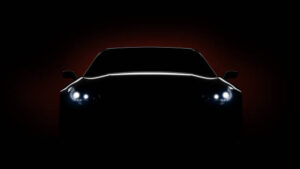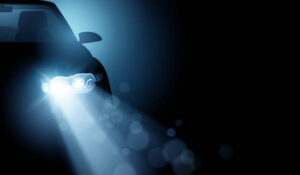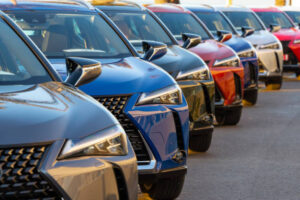The Forgotten Magic of H7 LED Bulb in Modern Car Lighting
Straight to the beam then of changing lighting technology in cars, it is mutating with the speed my neighbor mutates his mind towards a movie to watch. The h7 led bulb is not another booster but the futuristic solution to the old problems such as bad night view, overheating and boring headlights. Such bulbs are introducing a unique glamour into contemporary motoring, at least literally and conversely, at least figuratively, these new bulbs possess a longer service life, crisper beauty, and some sharp tricks at cooling combined in one sparkly package.

However, how do such cleverness come off through the use of H7 LED bulbs? High tech heat-dissipation solutions are the secret sauce, along with a style of illuming that appears to not only expand the road in front of your eyes but to also reduce the heat dissipation of external lighting effects. Have you ever been in a country road and are you ready to squint to see what that is? Is it a tree branch or a possum, read on.
The Heat Problem: The Case of Light-Emitting Diodes
Halogen lights dominated the nights before the LEDs occupied cars. No fancy delightful little things, and they heated– considerably heated. LED bulbs are far less power-hungry and tend to operate cool, though because of fitting so much power into an extremely tiny package, heat can creep up quite rapidly, the equivalent of that desperately unpopular person at a barbecue.
LED light bulbs detest being overheated. They will be too warm and will lose its brilliance, age prematurely, and in the worst cases stop altogether. The manufacturers could not simply add a fan and give it a name. They required bright, practical ideas that would make these bulbs give out lights night after night.
Smart Cooling: The Secret on How H7 Lights Stay Cold
Now this is where the engineering is brilliant. Majority of good quality H7 LED bulbs depends on one or combination of two systems; passive and active heat management.
Passive Cooling:
Aluminum heat sinks are used in some bulbs, being thick and finned. They are sort of mini radiators and draw warmth out of the fragile LED chip itself into the bulb-body where it is lost safely to the open air. No Moving parts. No noise.
Active Cooling:
The other H7 LEDs have small fans on their base. One of your thoughts may be, how long will a dinky fan last? The fact: The new breed of micro-fans are designed to last thousands of hours. They also effectively remove heat so that the bulbs remain the brightest longer periods. Just imagine a computer CPU fan, squished into headlight service size.

Thermal management: more than simple cooling
There is an advanced design now which incorporates the electronic thermal protection circuits. In the event that it becomes hot under the collar then these on board brains reduce the amount of power that goes to the LED sparing it being in the frying pan. Others even warn the driver with a light going on when temperatures build up.
Bulb Lifespan: The Reason Why Heat Dissipation Signifies Long Term Saving
Why waste money in changing bulbs when you have purchased a car that is long term? At that point, intelligent heating control comes in handy. Advanced cooling preserves LED chip to increase life expectancy beyond the formerly standard 500 hours of the halogen lamps to as high as 50,000 hours with some H7 LED lights. More road trips, less bulbs replacement and less time spent on the road but instead of being there.
And the best part, well-cooled devices also result in constant brightness. You will not find the result of a H7 LED well designed dimming into the same shadowy memory of the lottery numbers than a week ago.
Peripheral Vision: The Reason Why H7 LEDs do not Just Light What Is in Front
Suppose we just take a drive down a dark street. Using traditional halogens, a warm spot is send right down the middle. However LEDs are now made that spread light more uniformly, in both directions and in previously surprising levels in to the sides.
The Three Ways of Their Getting the Sideways Glow:
Optical Lens Design: More recent H7 LED bulbs are made with more precise lenses, shaped to focus the beam not only at a hot spot, but in a wide swathe. Generating usable light that goes down into the wings, the result of which is that you can see vehicles in time to avoid them, these LEDs can save your life as opposed to the flashlight type of beam of the old bulbs that currently allow us to see that one car.
Constant Color Temperature: Have you ever seen how pale some headlights are? Jack that is blotched color. The H7 LEDs produce a natural white light of approximately 6000K, daylight. Under this colour your eyes focus most readily upon movement in your outlying circles of observation, minimising the tunnel-vision effect in darkness.
Zero Hot or Dead Spots: Due to the flexibility of the LEDs to be placed in interesting patterns, new bulbs do not suffer the curse of the big dark spots in the corners as the early types did. What you get is a glow that appears to leak out, cling to corners and kiss curbs with light.

Real World: Real insights into the Wind: The Road is Best
Specs, let us do without. Turn to any late-night car hangout: users are replacing old bulbs with H7 LEDs and go nuts about it. One friend has told me that when I will have had the lights changed to LED, I will see more than I currently do at night. It is as though the road spreads out in front of you– and the ends–” The other one said that, in the first week after upgrading more raccoons appeared to him as compared to the number he had met during one year.
It is not only about preventing raccoons out of your grill, either. Increased side-lighting will translate to a quicker response to dangers that arise during low light settings. Out of nowhere pedestrians, animals, even badly marked junctions appear. Directly, there is an increase in safety and a little bit of confidence injection that turns every night drive you are running to the shop, or when going on a road trip, a little less jittery.